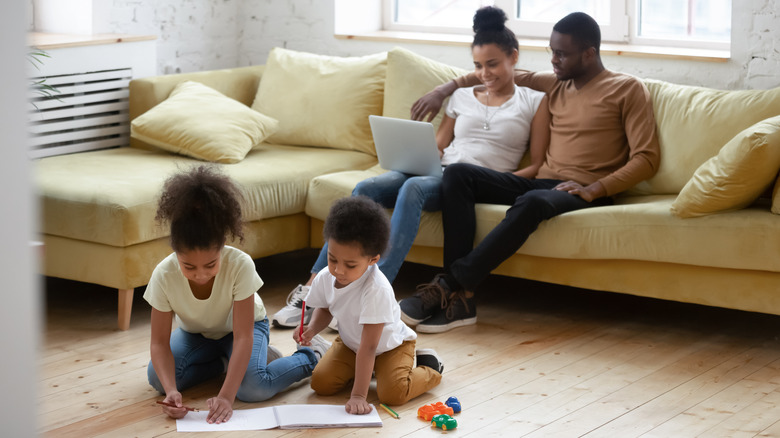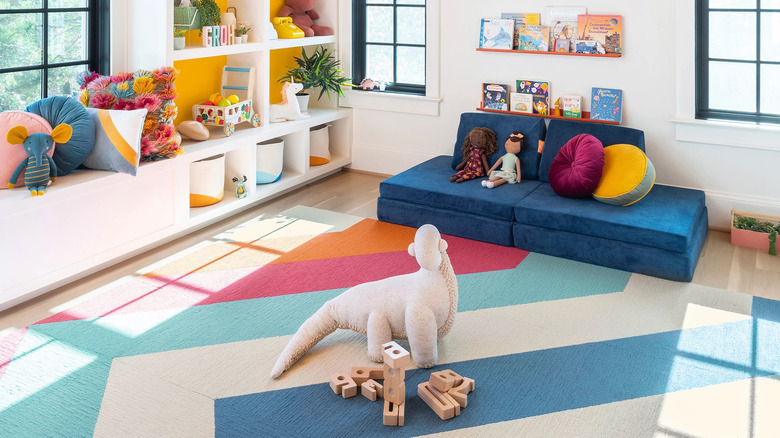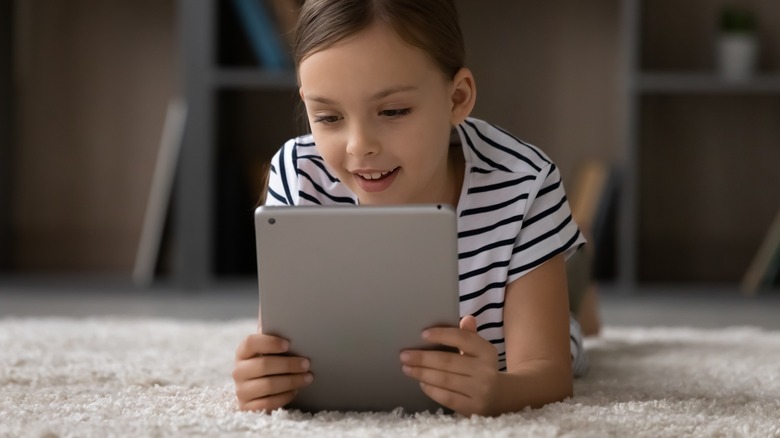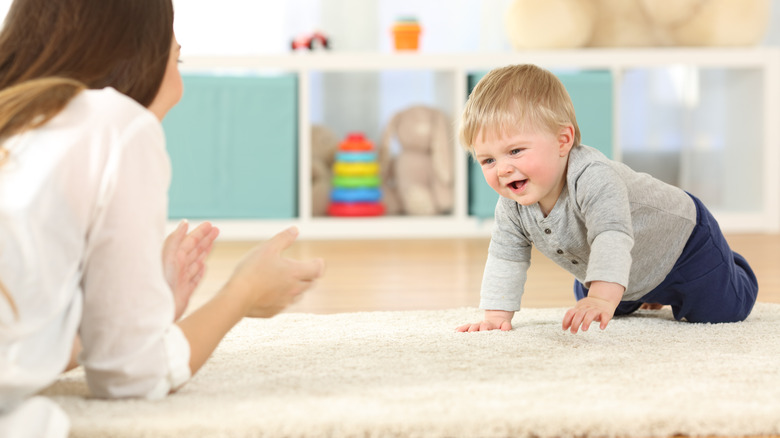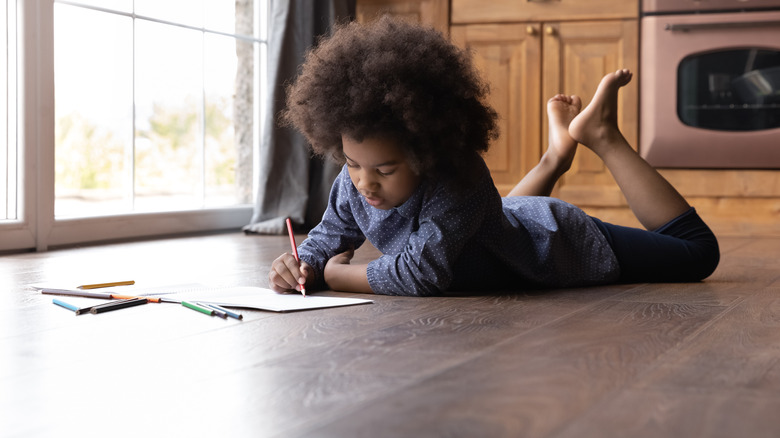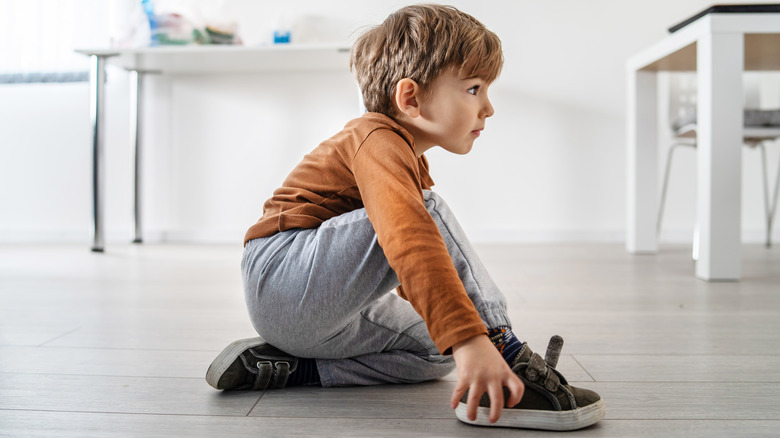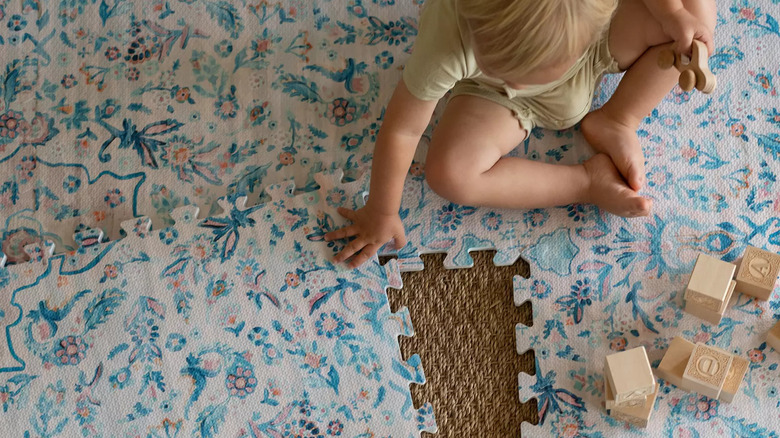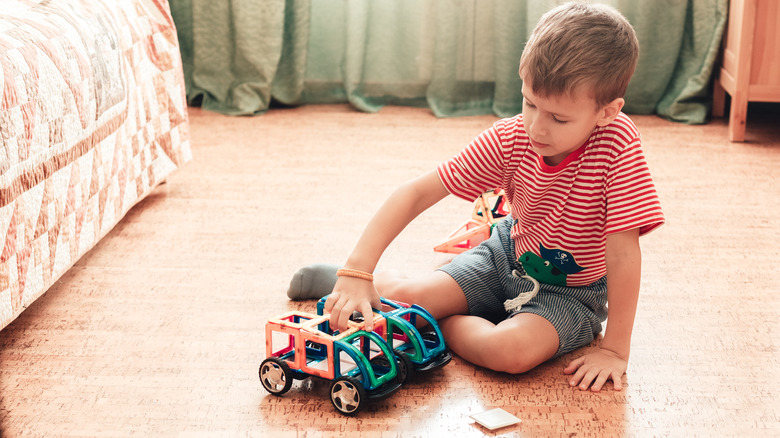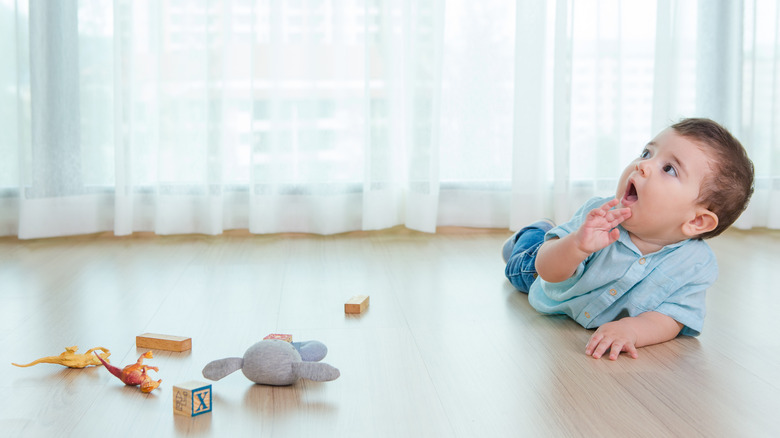The Best Flooring Options For Homes With Children
Choosing the perfect flooring for your home and interior design is a challenging feat. You have to consider the look, function, and practicality of your decision before you even think about going forward with wood, tile, carpet, or some sort of synthetic blend. When you have children, this task's difficulty only increases tenfold.
With young kids in a home, you not only have to worry about your own wants and needs, but theirs as well. You need a floor that provides a warm and welcoming environment for them to grow up in. Yet, it should also be durable and easily maintained to withstand their vivacious nature. Repairs may be inevitable, and you want to consider options that make damages easy and inexpensive to fix.
With these factors in mind, there are several flooring types best suited for homes with children. Below are eight floor options with the necessary characteristics to endure even the clumsiest and most playful children. Remember, every material has pros and cons that make it more or less suited for certain households.
Nylon carpet is sturdy but soft
Nylon is one of the top-selling synthetic carpet fabrics on the market, and considering it among the durable textiles out there, we understand why. This material isn't a natural fabric; it's actually plastic, a combination of chemically processed polymers that make it tougher than its organic counterparts. The strong and flexible fibers in nylon hold fast against heavy foot traffic and children rough-housing and playing on the floor.
Many parents prefer a soft floor for their kids, as it cushions falls and creates a gentler living environment. Nylon flooring provides this safety net and lasts over a decade with proper upkeep. Prices range between $1 to $10 per square foot, depending on the weave type. Keep in mind that shorter pile carpets, such as those done with a level loop technique, will be tougher, cheaper, and longer lasting. In contrast, velvet and shag nylon cost more, but are softer underfoot and more prone to child-caused damage over time.
In addition to being a sturdy material, this material also comes with built-in strain-resistant treatments, making it even more suitable for houses with children. Look for products treated with Scotchgard™ Carpet and Upholstery Protector or Teflon® Advanced Carpet Protector, which guarantee a carpet has protective additives. These formulas modify the plastic so stains don't soak in and cause permanent discoloration in your carpet, meaning you won't have to worry about artistic children leaving marker, crayon, or paint stains.
Polyester blend (PET) carpeting is affordable and easy to upkeep
Most parents don't want to splurge on an unreasonably expensive carpet when they have young kids. Children typically aren't going to aware of floor value, giving them no reason to tread carefully. They're likely to track their dirty shoes, drop food crumbs, and spill drinks, slowly degrading the surface. Although carpeting is harder to clean than hard floors, many parents prefer the soft look, especially in children's bedrooms — and this is where polyester fiber makes an opportunistic appearance.
Polyester fiber, specifically Polyethyline Teraphthalate (PET), is soft and made from plastic, just like nylon. However, this material has a few differences that sets it apart and makes it a great fit for young households. PET carpeting's primary appeal is its extreme affordability, costing only $0.50 to $2 per square foot. If children do ruin the carpet, you'll have to shell out a lot less money to repair it than if you'd purchased a more expensive fabric, such as fine silk or wool.
These carpets are also less prone to static. Static is harmless, but may be frightening to small children who don't understand what's happening when they get shocked. Instead of dealing with the potential drama, you can avoid it by choosing less static-prone materials. You should know that higher-priced PET fibers usually hold up better to wear and tear, although quality widely varies between manufacturers and installation workmanship. In general, this material does have natural stain and fade resistance without needing any additional chemical treatments.
Triexta carpeting is new and innovative
The third and final carpet on this list that makes a suitable children's bedroom flooring is a relatively new contender in the carpeting market. In 2014, The Federal Trade Commission recognized the material "Triexta" as its own type of fiber, separate from nylon and polyester variations (via Cleaning & Maintenance Management). This material is also known as "SmartStrand," and is made from polyester, just like PET.
This carpet is considered by many to be superior to other polyester blends if you're willing to pay a higher price, at around $2 to $6 per square foot. It has nylon's strong qualities paired with PET's stain resistance. This carpeting type also has good water resistance. It's durable, low-maintenance, easy to clean, and soft to the touch. If this doesn't already sound ideal for households with children, also consider that Triexta reportedly gives off less toxic gases (VOCs) than other synthetic carpets, making it safer to have around kids. This is due to the manufacturing process that uses corn sugar instead of typical petroleum.
Luxury vinyl flooring is resilient and imitates hardwood
Synthetic flooring qualities often make them a great fit for family homes, but you aren't limited to carpet-like imitations. Luxury vinyl flooring is a synthetic floor meant to look like natural wood planks, and its appearance and feel complements interior design while also adding practicality. These floorboards consist of multiple layers, including an ultraviolet ray-resistant topcoat, a decorative top, a plastic layer, a waterproof core, and a foam base.The combination gives luxury vinyl its reputation for resisting common forms of damage.
Luxury vinyl only costs $2 to $5 per square foot, making it highly affordable for those on a budget. Once installed, you'll have a faux wooden floor that is resistant to direct sunlight, water spills, and humidity, as most vinyl brands are heat-resistant and completely waterproof. This benefits most rooms in a home, including common spaces subject to child discourse.
If children do stain or damage part of the floor, you don't have to rip out the entire installation to repair it. Rather, you can replace the individual floorboards and leave the surrounding ones untouched. Therefore, the design's practicality greatly reduces the cost of labor and replacement materials for repairs.
Laminate wood flooring is cheap and low-maintenance
Another synthetic flooring makes this list due to its manufacturing process and manmade benefits: laminate wood flooring. This plastic-based floor is usually made of three layers, including a particleboard base, decorative top piece, and transparent covering. With its protective top, this flooring type suits most rooms beside bathrooms, where water pooling on the floor is common. Since it holds up well in high-traffic areas, laminate wood naturally makes a great fit for rooms where children come and go. At only $1 to $5 per square foot, it's a cheap and easy installation resilient against children's antics.
Given you purchase laminate flooring with a protective top layer, it'll be scratch-resistant despite whatever toys, shoes, or objects children drag over its surface. When installed and sealed correctly, the planks should also be fairly water-resistant for small spills that are cleaned up quickly. Laminate doesn't do great with excessive moisture, which is why it's not best for a bathroom. As long as you clean up water spills before the liquid seeps into the material, it's fairly easy to keep laminate flooring in good condition for over a decade.
Rubber flooring is padded and reduces noise
Although many synthetic floors are optimal for homes with small children, you don't have to completely commit to artificial flooring. Rubber floors are made from rubber trees and recycled products, like tires and shoes. They're sold in rolls or interlocking tile sets that are installed over concrete or a similarly consistent base material. Prices widely vary, though most rolled mats and tile packages range between $1 to $8 per square foot.
Placing rubber flooring in a home is unconventional, but it is definitely a design concept to consider if you have athletic and high-energy children. The naturally cushioned flooring breaks falls, provides a stable base to play on, and even muffles sound. If neighbors and housemates regularly complain that children are too loud, rubber floors can help reduce the noisiness, and bring peace to quarreling households.
These floors are also slip, water, fire, and allergen resistant, giving them many benefits over more traditional types. The only "downfall" is that rubber doesn't fit everyone's aesthetic. It doesn't have the elegance of wood slabs or the warmth of woven carpeting, making it tricky to design from an interior decorating perspective. Children may be fond of it when they're very young, but will likely grow out of it as they get older, meaning you won't get the full life expectancy of rubber, which can be up to 50 years.
Cork flooring looks like wood, but is much softer
Cork flooring has a mix of wood, rubber, and carpet characteristics, making it a perfect option for parents looking for the best traits of multiple flooring types. Cork is harvested from a European oak tree and is processed with air to create the plush material used in everyday life. The mixture of tree material and air gives it a rubber-like feel, and it can also work to muffle sounds.
The cork itself is naturally anti-allergenic and repels insects. It's also water-resistant, especially when solidified with sealants and coatings. While it shares many of the benefits of rubber and carpet with its soft feel, cork also has the advantage of being pretty to look at. Since the primary material comes from trees, it has a similar appearance to wood, which makes it easily fashioned with various interior design styles. Therefore, it's an attractive design choice for a wider variety of rooms in your home.
The price is higher than others on this list, ranging from $3 to $9 per square foot. However, the price is fair considering how cork hits on many needs, from its softer material suited for a child's lifestyle to its stylish look appropriate for adults. Your only concern should be the overall durability of this material. Children's toys can rip and tear the surface if they aren't careful. The easiest solution is to invest in the tile version of this flooring so you can replace individually damaged sections instead of uprooting your entire floor for repairs.
Oak and maple hardwoods are classic favorites
At the end of the day, you can't go wrong with good old-fashioned hardwood flooring. People have been using hardwood for floors since the 1600s. Over hundreds of years, these materials have been treated and refined to perfectly befit most rooms, even in houses populated with children.
Oak and maple hardwoods are some of the sturdiest wood species, making them two notable options that can withstand child antics. If these two woods aren't to your taste, you can go with any wood that scores above 1250 on the Janka Hardness Scale, a rating chart that determines wood strength and durability. Anything over 1250 is considered hardwood, and you can explore all kinds of tree species at the Advantage Lumber website. The more durable the wood, the more resistant it is to scratching. With proper sealants, hardwood can also be water, stain, and sunlight resistant, making it well-suited for messy children and brightly lit bedrooms.
Look for high-grade hardwoods labeled "FAS" or "Select". These grades indicate your wood comes from the strongest, healthiest trees and has a certain variegated appearance. Keep in mind that authentic hardwood doesn't come cheap, especially if you treat it to be more resilient to everyday wear and tear. Expect to spend between $18 to $24 per square foot of material alone.
